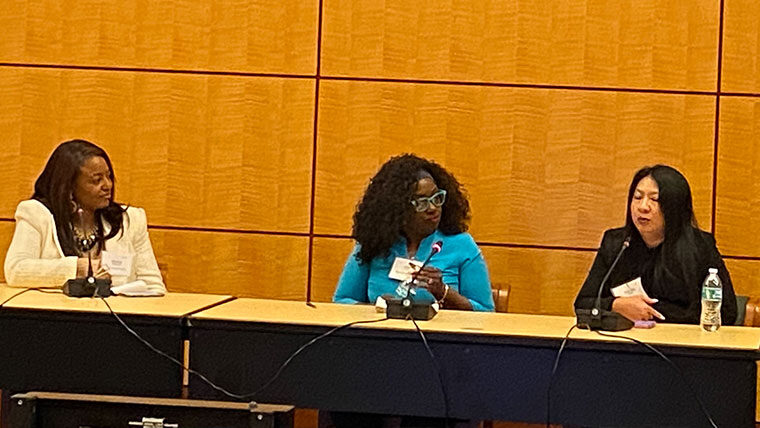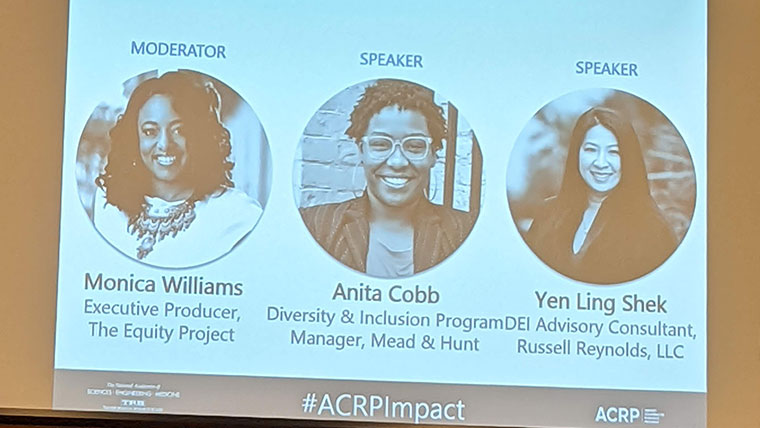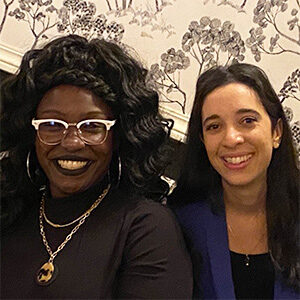The topic of Diversity, Equity, Inclusion, and Belonging (DEIB) continues to spark conversations in the Architecture, Engineering, and Construction (AEC) industry. Aviation is no exception. This next installment in our blog series exploring topics related to the five (possible sixth coming soon!) interest groups of our firm’s Employee Resource Group (ERG) will focus on the Ethnic Minorities interest group. Specifically, we’ll talk about the need to increase equity for ethnic minorities in the aviation industry, steps the industry is taking, and Mead & Hunt-specific goals we are taking to get there.
I recently had the opportunity to represent Mead & Hunt at the Airport Cooperative Research Board (ACRP) Insight Event: Systemic Inequalities in Aviation – Exploring the Racial Divide. As a member of the Airport Minority Advisory Council’s Professional Development Committee, I was able to join the research panel for this event. This honor allowed me to take part in the crucial conversation our industry is having.

This important conversation featured many key individuals that are very influential to this conversation, including Federal Aviation Administration (FAA) representatives, airport managers, consultants, Disadvantaged Business Enterprises/Airport Concession Disadvantaged Business Enterprises (DBEs/ACDBEs), and academics who are all interested in solving the issues of racism and equity in our industry.
I wanted share a few takeaways from this conference.
- There is acknowledgement that inequalities exist and there are people now willing to tell their stories so that these issues can be addressed. There’s a call to action for those willing to have the courage to review the past and want to strategize for removing barriers in the future.
- Funding is and will be available in aviation to help airports be responsible and responsive to their communities.
- $5 billion over the next five years will be dedicated to airport facilities and equipment. There is a 30 by 30 challenge that will look at 30 new air traffic control towers, upgrades to Enroute and TRACON facilities, electrification, power generation, and backup power.
- Airport Improvement Programs (AIPs) are available in the amount of $3.6 billion per year on top of the existing $2-3 billion per year. The advice with these funds was to plan strategically and maximize DBE utilization.
- The Terminal Improvement Program provides $1 billion per year and is in place to keep US airports in step with the rest of the world’s most advanced airports.
- The Bipartisan Infrastructure Law (BIL) provides $25 billion for infrastructure improvements, and while airport projects are not well-defined at this time, the advice was to consider multimodal projects because outside of aviation, organizations related to highways, rail, and other transit connections also have funds to devote to these projects.
- There is a need for aviation professionals to put on their social equity and social justice hats so that we can think outside of how we have always done things. Paying attention to disadvantaged communities is critical to the future of our industry because of the multiplier effect of ignoring systemic inequalities. Rural communities and smaller airports are a great place for us to have influence, and the FAA has committed a significant amount of funding to these entities.
What is Mead & Hunt doing?
- As a company, we should be very proud to not only be part of these impactful conversations, but have significant representation on the matter. Our Employee Resource Group (ERG) and Program Managers allow us to be on the forefront of these topics that address social sustainability. This issue isn’t going away, and it’s nothing to fear. Our ERG and Program Managers are here to help navigate this complex space and facilitate the conversation. Taking care of each other and the communities we serve is what makes us who we are as a firm.
- While we do have so much to be proud of, there is major work to do that will call for us to be honest, respectful, humble, and vulnerable. There’s no shame in acknowledging areas where we can experience growth. Many of our airport clients were in the room for this conversation, and please believe that the need for consultants that are DEIB oriented was a very strong sentiment. Several of our peer firms were also in the room, and we are ready to learn from their accomplishments as well.
Racial equity, social justice, systemic inequalities, and other topics of this nature are complex to address. Some are fully invested and passionate. Others don’t see a need for DEIB. And then there’s the curious middle that just wants to know what all the fuss is about. Taking care of people, doing the right thing, and doing what makes sense is social sustainability. Open hearts and minds can create the next 100 years of success for our company and beyond, and we are on our way to proving that this concept can work. I want to thank all of those in leadership of various levels for supporting the efforts to have a seat at the table for these industry-changing efforts. In my humble opinion, it’s time to get into some good trouble!



